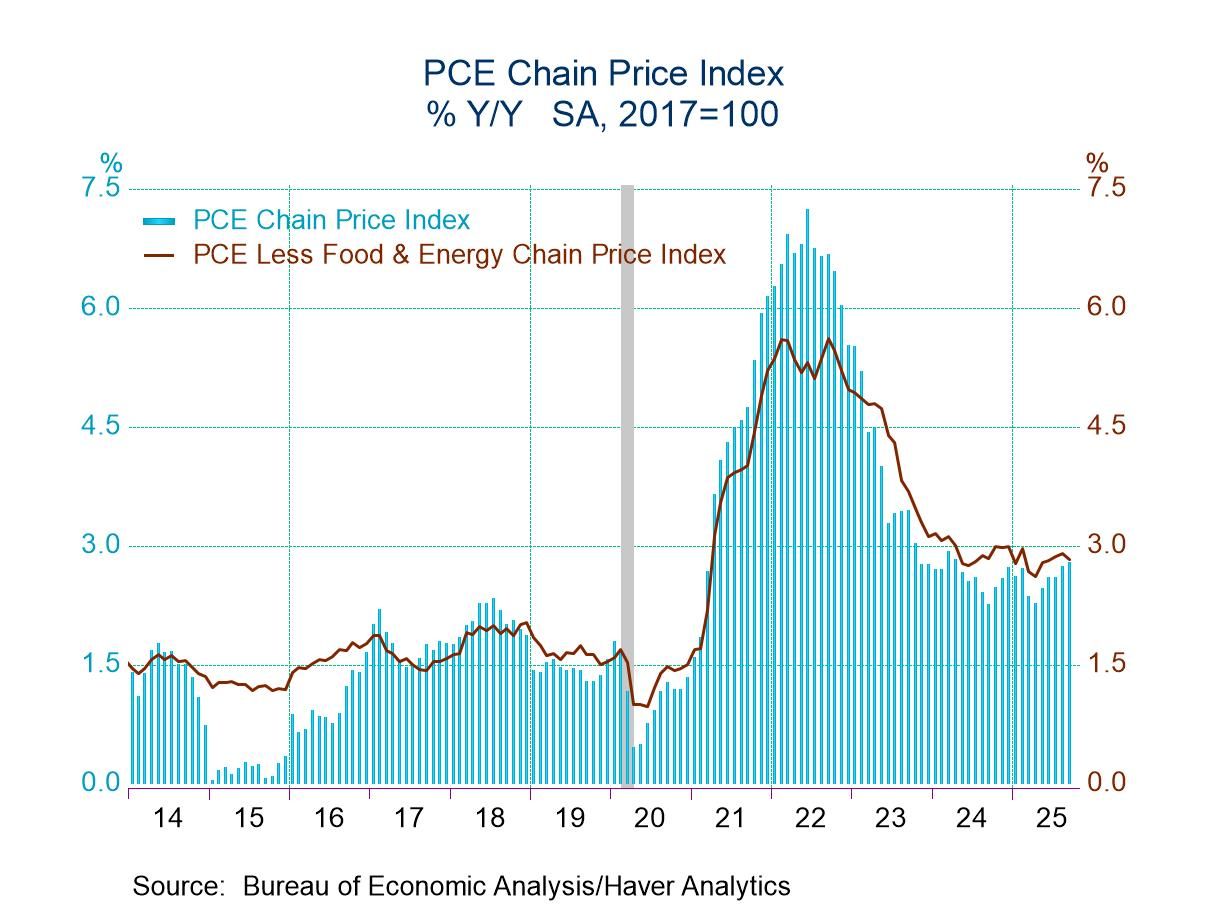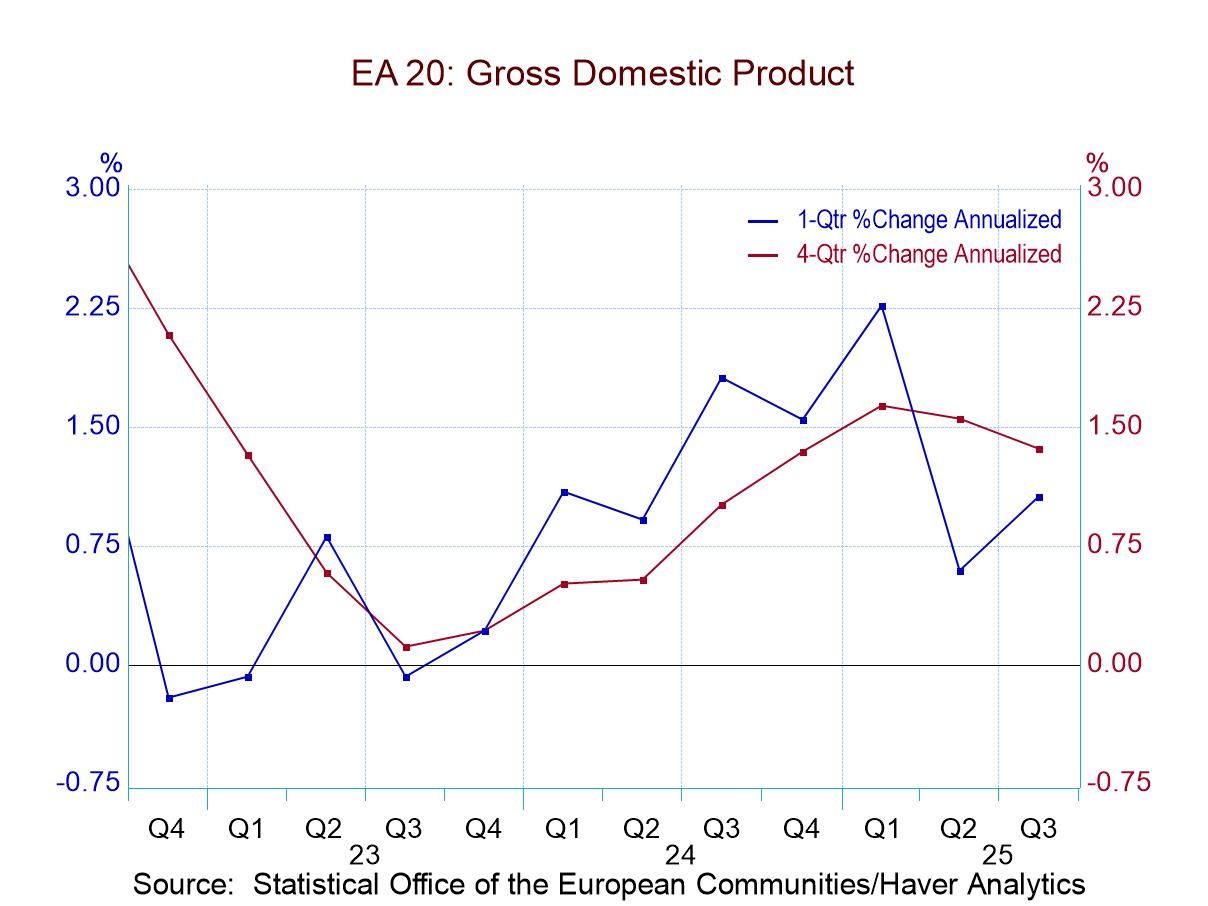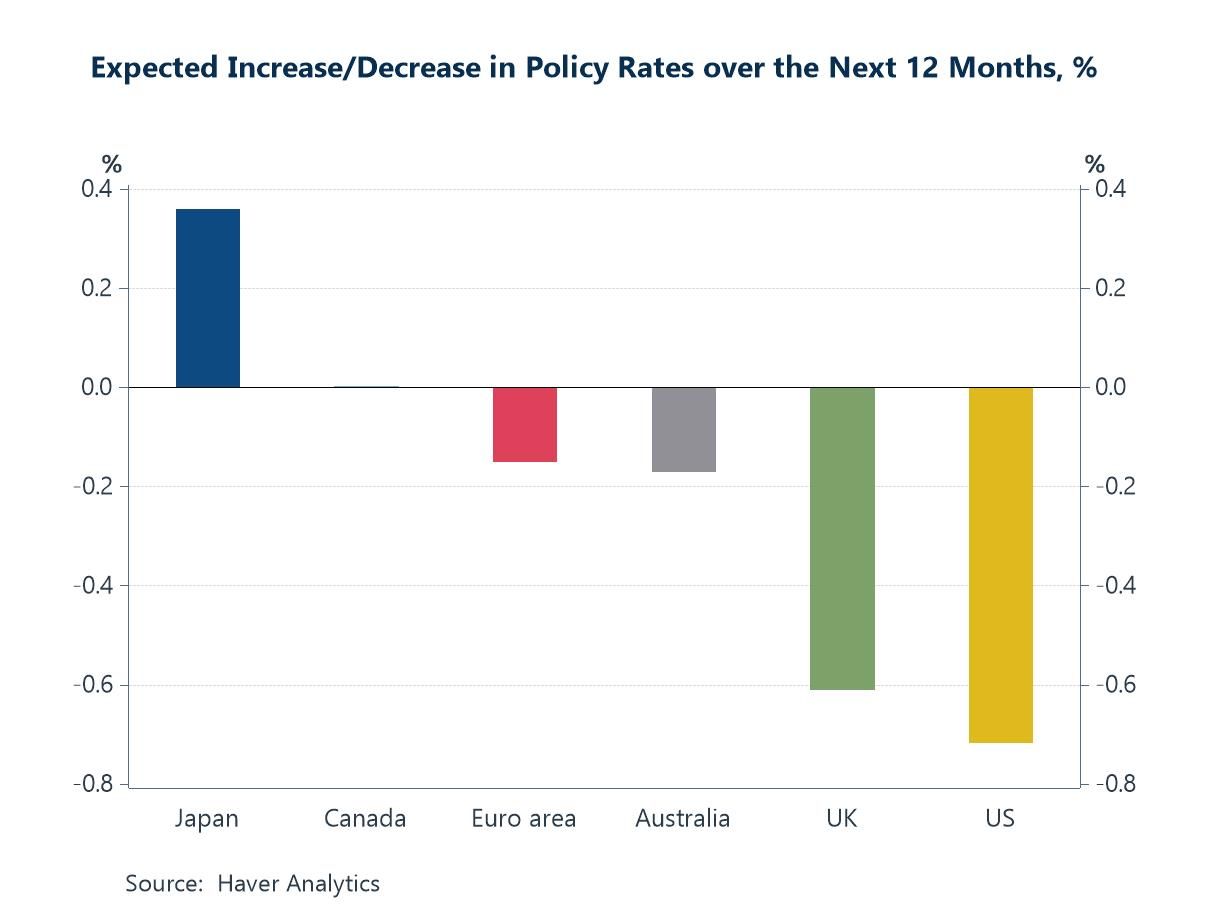U.K. Inflation Moderates

Inflation in the United Kingdom measured by the CPI-H measure rose by 0.1% in May as the core excluding energy, food, alcohol, and tobacco also decelerated by increasing 0.1% on the month. These slower May increases follow accelerated increases in April for both the headline and core and more modest increases in March. The sequential growth rates in the headline CPI-H show a gain of 4% over 12 months, a rise at a 4.3% annual rate over 6 months, and a 3.4% annual rate rise over 3 months. The core for the CPI-H shows a 4.2% increase over 12 months, a 4.1% annual rate increase over 6 months and another slight deceleration to 3.6% at an annual rate over 3 months. These data for the headline and the core both show that U.K. inflation has plateaued and begun to edge lower; however, the deceleration is quite slight for both the headline and for the core measures.
Inflation diffusion that measures the breadth of inflation shows a reading of 54.5% over both 12 months and 6 months, with 3-month diffusion much lower at 36.4%. Diffusion readings of 50% show inflation accelerating and decelerating with equal tendencies from period-to-period. Diffusion above 50% shows more accelerating inflation while diffusion below 50% finds more deceleration for inflation. Diffusion readings show that for 3-months compared to 6-months diffusion is significantly lower but that diffusion over 6 months (compared to 12-months) and for 12-months (compared to 12-months ago) is slightly accelerating.
The HICP measure parallels the results for the headline CPI-H with a slight inflation bulge over 6 months and significant slowing of inflation over 3 months. The agreement across the headline, and core CPI-H measures compared to the HICP is reassuring that these trends are true and not simply mercurial or the results of a particular inflation weighting scheme (since CPI-H and HICP use different weights).
Meanwhile unemployment in the U.K. has risen only slightly over the past 12 to 24 months. The recent U.K. monthly GDP reading showed a sharp slowing, but year-over-year growth is still positive headline.
The sequential chart that depicts the growth rates sequentially for timeseries of 3-month, 6-month and 12-month inflation (above) shows that part from a one month slice of those rates (which is what the table provides) the timeseries reveal that the tendency for inflation peaked across these three frequencies back in January and has since been reduced to its lowest pace since October 2024 for both 6-month and 12-month CPI-H core inflation. For the 3-month version, inflation at 3.6% is the slowest since January 2024. Three-month core inflation has slowed without increasing for four months in a row as has 12-month core inflation.

Inflation in the United Kingdom is still broadly overshooting its 2% target. But the economy has slowed, and the labor market is softening, both signs that inflation pressures - in all likelihood - are not accumulating. Slack conditions usually create more upward price pressures. And we see downward pressures are in train. Still, U.K. headline inflation is at 4% and the core is at 4.2% over 12 months. The best performing statistic is over 3 months, a less trustable reading and that horizon only has the headline at 3.4% and the core at 3.6%. These may still be rates that are too high to give the BOE true comfort about hitting its target, but these nonetheless are signs of inflation progress underway. It may still not be enough to prompt rate cutting but rate cutting may now seem a more viable option in the months ahead. However, the months ahead are a fog for forecasters because of international tariff disputes, growth uncertainties, warfare, the risk to oil prices and changing geopolitical defense burdens that a spurring economic activity ahead faster in Europe, especially in Germany.
Robert Brusca
AuthorMore in Author Profile »Robert A. Brusca is Chief Economist of Fact and Opinion Economics, a consulting firm he founded in Manhattan. He has been an economist on Wall Street for over 25 years. He has visited central banking and large institutional clients in over 30 countries in his career as an economist. Mr. Brusca was a Divisional Research Chief at the Federal Reserve Bank of NY (Chief of the International Financial markets Division), a Fed Watcher at Irving Trust and Chief Economist at Nikko Securities International. He is widely quoted and appears in various media. Mr. Brusca holds an MA and Ph.D. in economics from Michigan State University and a BA in Economics from the University of Michigan. His research pursues his strong interests in non aligned policy economics as well as international economics. FAO Economics’ research targets investors to assist them in making better investment decisions in stocks, bonds and in a variety of international assets. The company does not manage money and has no conflicts in giving economic advice.






 Global
Global